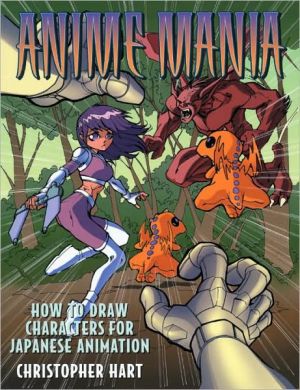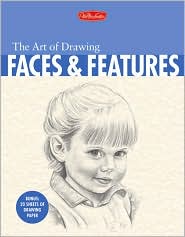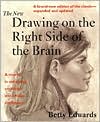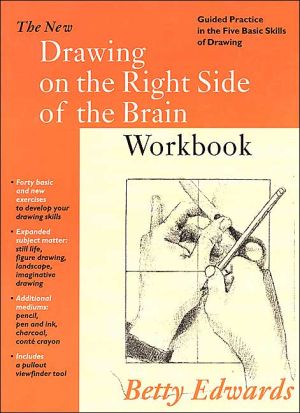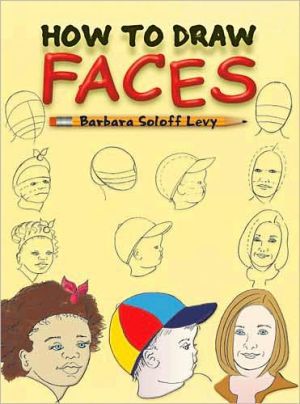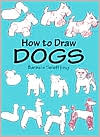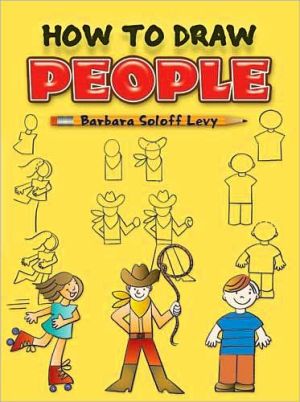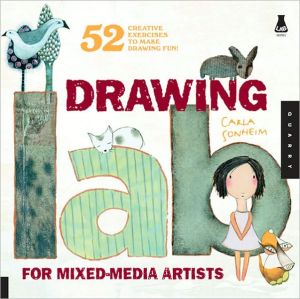Anime Mania: How to Draw Characters for Japanese Animation
There’s no doubt about it: Japanese animation is hot. Television shows, films, and videos featuring the anime style of animation are wildly popular. Japanese animation is like a comic book come to life, retaining all its power but in moving form. It has a very different style from traditional western animation, incorporating heavy shading, dramatic camera angles, and beautifully rendered special effects—especially the fantastic anime depictions of ocean waves, storms, smoke, and explosions....
Search in google:
There’s no doubt about it: Japanese animation is hot. Television shows, films, and videos featuring the anime style of animation are wildly popular. Japanese animation is like a comic book come to life, retaining all its power but in moving form. It has a very different style from traditional western animation, incorporating heavy shading, dramatic camera angles, and beautifully rendered special effects—especially the fantastic anime depictions of ocean waves, storms, smoke, and explosions. Easier to draw than its western counterpart, anime is more limited and simpler in its execution. In Japanese anime the characters move, but their movements are generally staccato, sharp, and dramatic—not free-flowing with lots of overlapping action, anticipation, and follow-through.In Anime Mania, famous cartoonist, teacher, and best-selling author Christopher Hart demonstrates how any comic book artist can become expert in this wonderful style of animation. Step by step, he details how to draw the coolest anime characters from the widest selection of popular styles: high-tech cyberpunks who live in the world of the future; teen characters—with troubled relationships at school, home, and on the street; and mighty monsters, fantasy warriors, and giant robots. Aspiring animators will also find chapters on anime’s spectacular special effects, the role of storyboarding in anime, sketching and the art of character design, and a mini-crash course in perspective. The book concludes with interviews with Scott Frazier, an American anime director working in Japan, and Mahiro Meada, a renowned Japanese animation director.Brimming with hundreds of spectacular examples, illustrations, and step-by-step exercises, Anime Mania details how anyone can become a real anime artist without having to reinvent the art of drawing. Angela Carstensen - VOYA A perfect companion to his Manga Mania: How to Draw Japanese Comics (Watson-Guptil, 2001), Hart's latest how-to will delight fans of Japanese animation. Although largely inspired by manga, the special considerations for creating anime warrant a separate book. It is clear that Hart is not writing for beginners but for teens wanting to try a new style. Character design and "casting" are the central topics. In his introduction, Hart states that character design is the foundation of anime work in the United States, especially as the task of animating (drawing characters in pose after pose) is rarely done there. Hart breaks down both human and fantastic forms into shapes and the angles used to connect them before adding the details that make anime unique. Rather than giving step-by-step drawing instructions, however, Hart suggests solutions to common problems and inspires imagination. Chapter titles include "Fantastic Creatures," "Mecha Madness!" and "Spectacular Special Effects." The final chapter, "Cool Stuff," will be especially popular with aspiring animators. In it, Hart describes the interior of an animation studio, discusses the advantages of going to art school, and includes interviews with an American and a Japanese director. Interested teens will love reading this book whether they enjoy drawing or not. The illustrations are colorful and dynamic. The writing is casual and brief, with a nice amount of humor. Discussing a figure displaying the costume of a royal samurai, Hart begins "You know what's really scary? This is him trying to smile." VOYA CODES: 4Q 4P J S (Better than most, marred only by occasional lapses; Broad general YA appeal; Junior High, defined as grades 7 to 9; SeniorHigh, defined as grades 10 to 12). 2002, Watson-Guptil, 144p,
Introduction6Basic Character Construction8Teen Characters28Fantastic Creatures44A Crash Course in Perspective64Mecha Madness!70Spectacular Special Effects90Character Design102Cool Stuff132Index144
\ VOYAA perfect companion to his Manga Mania: How to Draw Japanese Comics (Watson-Guptil, 2001), Hart's latest how-to will delight fans of Japanese animation. Although largely inspired by manga, the special considerations for creating anime warrant a separate book. It is clear that Hart is not writing for beginners but for teens wanting to try a new style. Character design and "casting" are the central topics. In his introduction, Hart states that character design is the foundation of anime work in the United States, especially as the task of animating (drawing characters in pose after pose) is rarely done there. Hart breaks down both human and fantastic forms into shapes and the angles used to connect them before adding the details that make anime unique. Rather than giving step-by-step drawing instructions, however, Hart suggests solutions to common problems and inspires imagination. Chapter titles include "Fantastic Creatures," "Mecha Madness!" and "Spectacular Special Effects." The final chapter, "Cool Stuff," will be especially popular with aspiring animators. In it, Hart describes the interior of an animation studio, discusses the advantages of going to art school, and includes interviews with an American and a Japanese director. Interested teens will love reading this book whether they enjoy drawing or not. The illustrations are colorful and dynamic. The writing is casual and brief, with a nice amount of humor. Discussing a figure displaying the costume of a royal samurai, Hart begins "You know what's really scary? This is him trying to smile." VOYA CODES: 4Q 4P J S (Better than most, marred only by occasional lapses; Broad general YA appeal; Junior High, defined as grades 7 to 9; SeniorHigh, defined as grades 10 to 12). 2002, Watson-Guptil, 144p, \ — Angela Carstensen\ \ \ \ \ Library JournalA successful contributor to MAD magazine, the "Blondie" cartoon strip, and various film and TV productions, Hart previously brought us Manga Mania: How To Draw Japanese Comics. In this follow-up, he demonstrates anime, the unique Japanese animation style of heavy shading, dramatic camera angles, and beautifully rendered special effects, most popularly known to U.S. audiences through series like Digimon and Sailor Moon. Based more on character than action, these anime include high-tech cyberpunks and teen characters with troubled relationships, as well as monsters, fantasy warriors, and giant robots. Hart covers storyboarding, sketching, perspective, the basics of animating, and the functioning of an animation studio. Rounding out the book are interviews with two anime directors. Highly recommended for public libraries. Copyright 2002 Cahners Business Information.\ \
